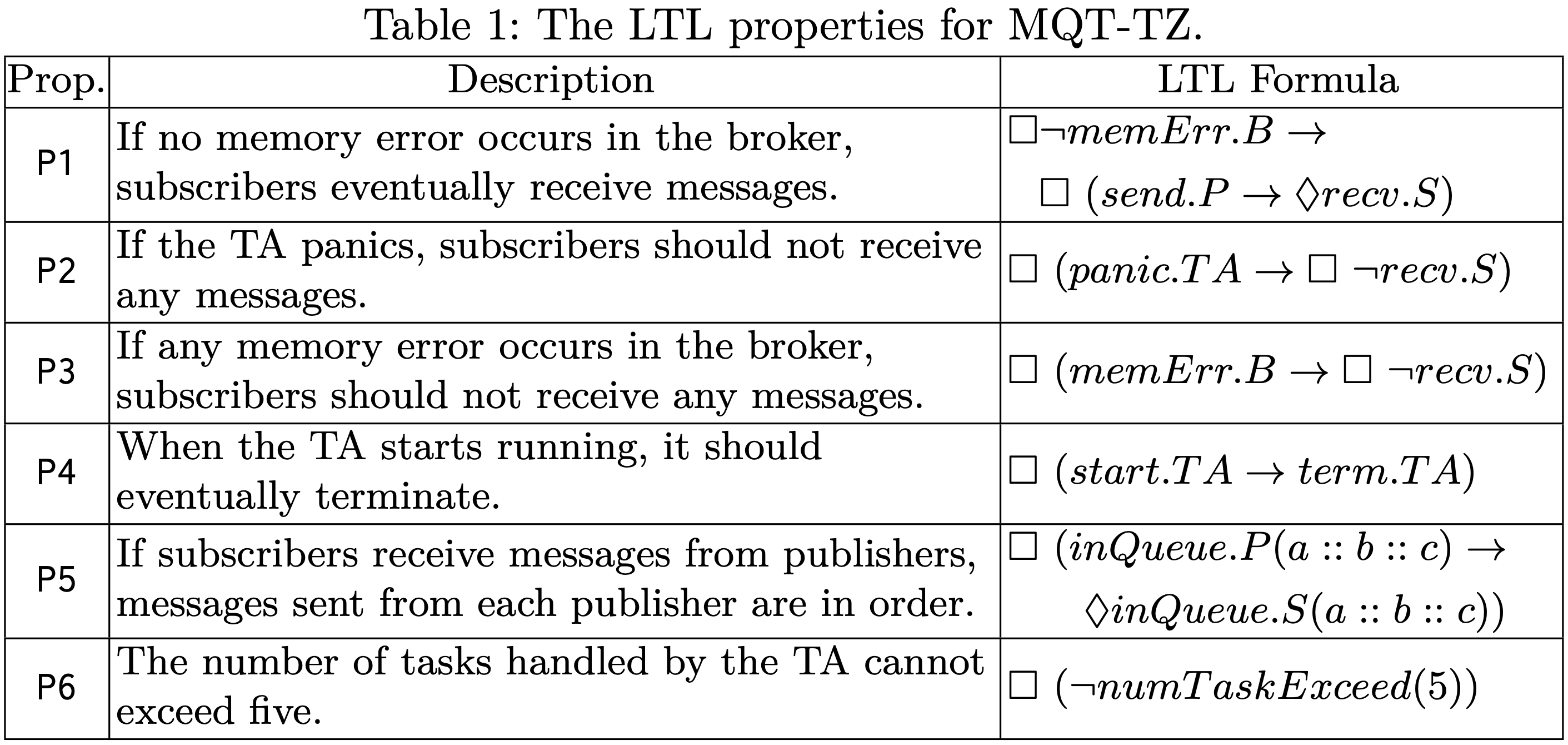Formal Specification of Trusted Execution Environment APIs
Introduction
Trusted execution environments (TEEs) have emerged as a key technology in the cybersecurity domain. A TEE provides an isolated environment in which sensitive computations can be executed securely. Trusted applications running in TEEs are developed using standardized APIs that many hardware platforms for TEE adhere to. However, formal models tailored to standard TEE APIs—required for rigorous verification—are not well developed.

Our research addresses this challenge by leveraging a very expressive modeling language, called Maude, which supports powerful object-oriented specification to present a comprehensive formal model of TEE APIs that is explicitly designed for the formal analysis of TEE applications.
Problem
The standardization of TEE is overseen by GlobalPlatform and many systems that implement TEE, such as Samsung TEEgris, Trustonic Kinibi, Qualcomm QTEE, etc., adhere to this standard. GlobalPlatform defines the API for trusted applications (TAs) to handle secure resources, such as memory and storage. These APIs are essential because they provide TEE services to applications running in a TEE. The uniformity of this API specification ensures compatibility across a wide range of applications, even when running on different CPUs.
However, the GlobalPlatform standard is inherently informal and the architecture and behavior of the APIs are quite complicated. The complexity mainly arises from the stringent security requirement that each TA is assigned a dedicated storage, isolated and shielded from other TAs. As a result, even basic operations such as file creation in TEE, involve intricate multifaceted processes. These factors make it challenging to develop a faithful formal model for TEE.
Formal Specification of TEE APIs
We focus on Trusted Storage API and Cryptographic Operations API, which are foundational to mobile and IoT applications. Since TEE API is mainly specified using objects and their interactions, we use Maude’s object-oriented specification to naturally specify the architecture as a collection of objects and the behavior as rewrite rules. Below is an overview of the formal specification.

In the TEE API standard, resources such as files, keys, and cryptographic processes are expressed as objects in an abstract way. For example, a cryptographic operation abstracts a cryptographic process and includes attributes describing its details and status (e.g. the cryptographic algorithm in use). We model cryptographic operation as an instance of class CryptoOp. Below is the Maude formal specification.

The Cryptographic Operations APIs’ behavior is modeled as rewrite rules, which define how the aforementioned instances are created/deleted and modified. Below is the rewrite rule for an API, TEE_AllocateOperation that allocates a new cryptographic operation given an algorithm identifier, an operation mode, and a maximum key size.

Case Study on Formal Analysis of MQT-TZ
We demonstrate the effectiveness and feasibility of our formal model using MQT-TZ, an open-source TEE application that secures MQTT, a topic-based publish-subscribe IoT protocol. For formal analysis, we model MQT-TZ’s entities (brokers, publishers, and subscribers) as Maude objects and specify the protocol’s overall behavior, including data collection, communication between clients, and broker-side processing as rewrite rules.
We analyze several security requirements under two threat models: an out-of-memory threat and a message modification threat. By expressing security requirements as linear temporal logic (LTL) formulas and applying Maude’s built-in model checking method, we identify several security vulnerabilities. Below are (1) the LTL properties for MQT-TZ and (2) the model checking results, with red highlighting property P2 and P3 violations indicating possible vulnerabilities. By analyzing the violations, we have discovered that TA can panic during the message re-encryption and that when insufficient memory is detected, the TA finalizes the re-encryption with an error and returns a re-encrypted message containing (dummy) data.


We implement code-level patches and confirm their integrity by performing the LTL model checking again. Below are (1) the proposed patches and (2) the model checking results showing that P2 and P3 are no longer violated.

Future Work
Future work will focus on the following aspects.
Extending Formal Specification Expand current formal specification to cover the time API, TEE arithmetical API, and peripheral and event APIs, providing a comprehensive TEE API formal model.
Formal Verification of TEE APIs Verify the TEE APIs themselves or generate test cases for real-world validation using our formal specification.
State Space Reduction Techniques Develop state space reduction techniques to enhance the efficiency of TEE application analysis.
Contacts
- Geunyeol Yu rgyen (at) postech.ac.kr
- Seunghyun Chae shchae7 (at) postech.ac.kr
References
- Geunyeol Yu, Seunghyun Chae, Kyungmin Bae, and Sungkun Moon. Formal Specification of Trusted Execution Environment APIs. International Conference on Fundamental Approaches to Software Engineering (FASE), 2024. [paper, github]
Last modified: 2025/6/28 01:00:42 (Seunghyun Chae)